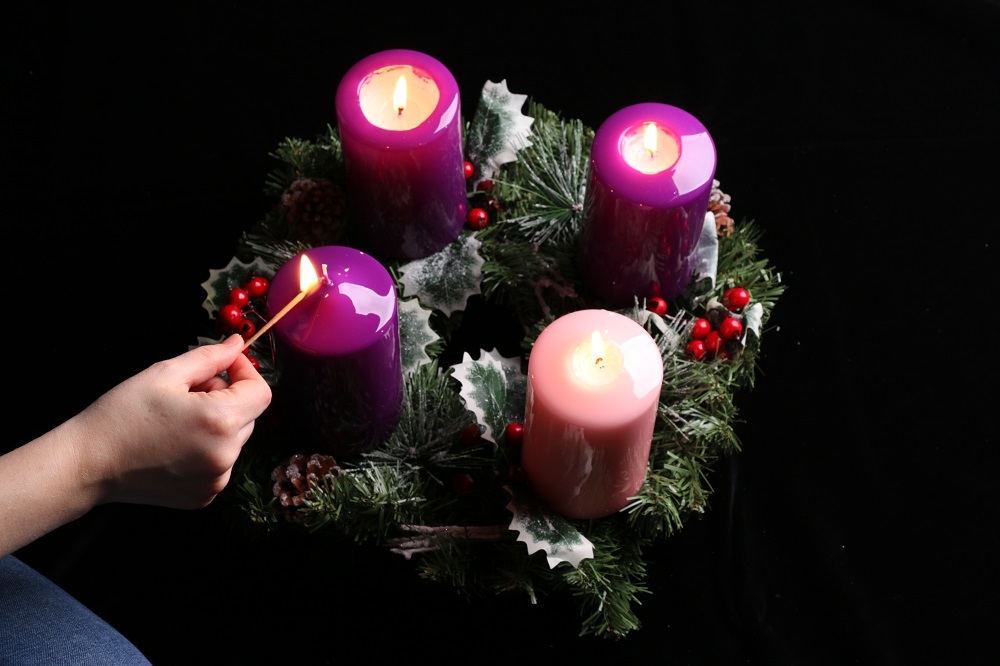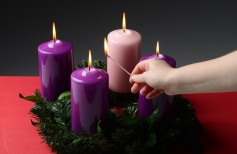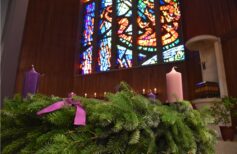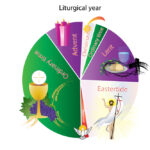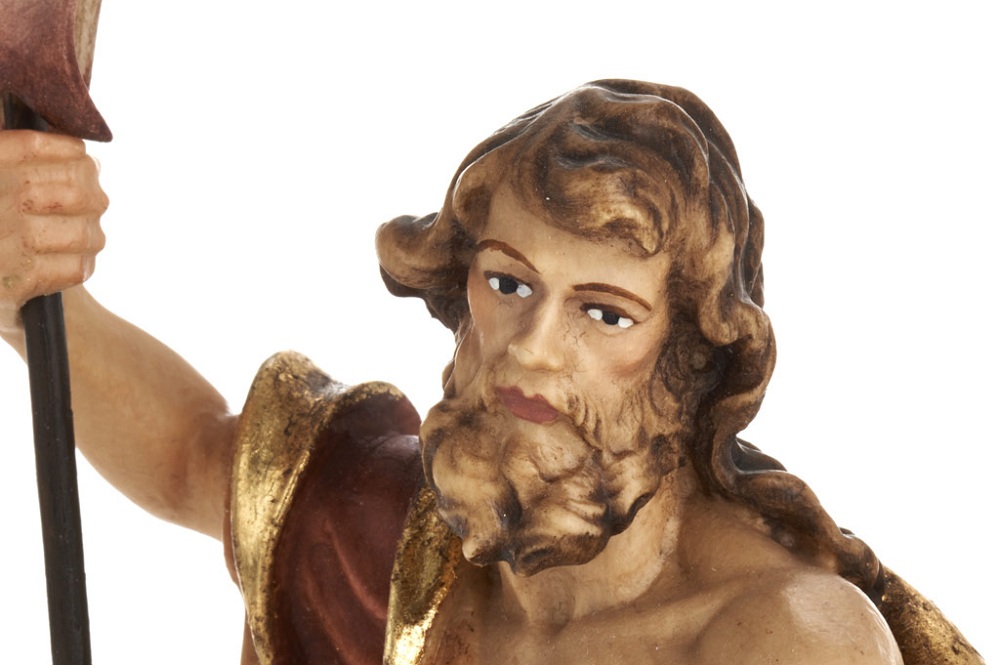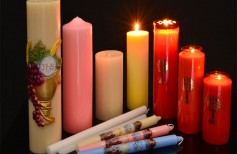Contents [hide]
Advent has always been one of the most important moments of the year for Catholics all over the world. It is the time we get ready for Christ’s coming, for the renovation of his miracolous birth, which will be celebrated on Christmas, but not just that. Advent is also the lithurgical time when devotees reaffirm their hope, the wait for Jesus’ second coming, the one that will establish the end of the world as we know it, the end of time.
The word Advent comes from Latin adventus, “coming”, but also “wait”. It comes from the Greek word parousía, or epiphaneia, words that were used in ancient cults to indicate the descent of the god to the temple to meet his devotees, his manifestation on the same ground of men.
So, by celebrating the Advent we prepare for Christmas on one side, to the solemnity of Jesus first coming, made man and descended among mortals, born in a manger by a common girl, a carpenter putative father; at the same time we express our hope, the joyful wait for his second coming, the so called parusia, when he will descend again among men wrapped in glory and the power of Heaven.
A moment of joy and hope, not suffering, as Lent before Easter is, but which involves a daily spiritual attention, the progressive awareness of the event that is about to come.
Origins of the celebration
Christian authors, since the first centuries after Jesus’ birth, described His coming in their texts, talking about the mystery of his conception in Mary’s lap, in mortal flesh, but also the promise, hidden in His becoming a man, of what would be His second, final coming. Unlike pagans, Jesus decided to abandon the temples men made, their stone columns, and become a man Himself, to be wrapped in a temple of flesh and blood, mortal and subject to pain, to scarifice, to suffering.
The Advent began being celebrated in the western world aorund the VI century, even though at the beginning its value resembled more the Lent: by celebrating the birth of Jesus they actually celebrated his Resurrection. This is why the weeks before the advent were characterized by fasts and penances besides prayers.
Celebrations of the Advent
The Advent begins four weeks before Christmas, aproximately between November 27th and December 3rd. In the Ambrosian Ritual the weeks are six. The Advent begins with the Vespers on the first Sunday, and ends with Christmas Vespers. It involves a path of prayer both on weekdays and on Sundays, but it is especially on Sundays that the devotion of the believers is concentrated. Each one of the four Sundays of the advent is called with a traditional name taken from the first four words of the Intriot, the Antiphone that introduces the Mass: Ad te levavi (First Sunday, from Ad te levavi animam meam “To you, O Lord, I lift up my soul”, Psalm 24); Populus Sion (Second Sunday, from Populus Sion, ecce Dominus veniet ad salvandas gentes “People of Sion, the Lord will save the people”, Isaiah 30,19.30); Gaudete (Third Sunday, from Gaudete in Domino semper “Rejoyce in the lord always”, Filippesi 4,4.5); Rorate (Fourth Sunday, from Rorate, coeli desuper, et nubes pluant iustum “Drop down dew, ye heavens, from above, and let the clouds rain the just”, Isaiah 45,8).
During Advent weeks priests wear purple lithurgical vestments, which can be pink in the third week, color that symbolizes the joy for the imminent Christ’s coming.
The Lithurgy of the firts three weeks, until December 16th, is focused on the wait for the parusia, Christ’s second coming, and involves the reading of some extracts from Gospel of Matthew (Matthew 24, 37-44: “Watch therefore, for you do not know on what day your Lord is coming“; Matthew 3,1-12: “Repent, for the kingdom of heaven is at hand!“; Matthew 11, 2-11: “Are you the one who is to come, or should we expect someone else?“). On the last Sunday of the Advent there are readings on how Jesus would be conceived in Mary’s breast and was born among men (Matthew 1, 18-24), concentrating then on Jesus’ birth and Christmas.
So, the first three weeks focus on Jesus second coming, while getting closer to Christmas, the attention shifts on His miracolous conception and His birth in Bethlehem.
The celebrations of the advent involve singing hymns, different ones according to the period, and seven antiphones, called the Great or or the O Antiphons, because they all begin with the vocative ‘O’: O Sapientia, O Adonai, and so on… They are seven Latin antiphons typical of the Lithurgy of the Hours. They are sung on the Vespers, before the Magnificat, during the biggest holidays of the Advent, from December 17th to 23rd.
The Gloria is not recited anymore until the Midnight Christmas Mass, where it becomes the real symbol of Jesus’ triumphal birth.
Mary and the Advent
The gospel passages read during the firts three weeks of the Advent refer respectively to the coming of the Lord at the end of times and to Joseph Baptist, while the one on the last Sunday refers to all events and people that will lead to Jesus birth, Mary first of all. It is not by chance that the fourth Sunday of the Advent is traditionally considered as the one when she visited Saint Elizabeth, already carrying Joseph Baptist’s child, to give her the good news of the imminent Jesus birth. Mary can be considered as the symbol of Advent itself, of humanity that after wandering for so long is ready to welcome God and his promise again, accepting his will with full faith and hope.
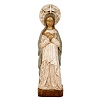
Mary is at the same time an instrument of God’s will and the spokesperson of men, because she willingly accepted her destiny and was of service for the great and wonderful God’s plan. Her model of humility and joy runs through the centuries, warming the ultimate wait, the greatest of mysteries, year after year: a young girl, fully aware, was expecting a baby that would represent the salvation for her and the whole mankind. Mary, instrument and loving mother of God, keeps the flame of alleagiance alive, waiting for Jesus’ new coming and His triumph among worthy men.
The Advent Wreath
The succession of the Advent Sundays is celebrated in many churches and homes by lighting up the candles on the advent Wreath; it’s a ring of evergreen branches, inside which there are four candles that are lit one by one to celebrate the victory of light over darkness, and the hope tied to the coming of the Messiah. Each candle in fact symbolizes respectively: Hope, Peace, Joy and Love. The round shape of the ring itself recalls eternity, the wholeness of the world, while evergreen trees symbolize hope. It is a Germanc tradition, dated back to the early XIX century. In the first Advent Wreaths there was one candle for each day of the Advent, while today there are usually four, maximum five if we count the candle that must be lit on Christmas.
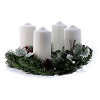
Each candle has its particular symbolic meaning: the first, called ‘the Prophet’s candle’, refers to the prophecies conerning Jesus’ birth; the second, called ‘Betlehem candle’, recalls the city where He was born; the third, called the ‘Shepherds’ candle’, recalls those who worshipped Jesus first; the fourth, called ‘the Angels’ candle’, celebrates the messengers that brought the news of the miracolous birth into the world.
Advent for children
Even for children, Advent is an important moment, and it should be a good occasion to make them understand the deepest and most spiritual meaning of Christmas. This holiday, so precious and sacred, is too often impoverished of its actual value in this modern world, to gain a more pagan and consumer dimension. Children should understand that the wait is not just for Christmas gifts, but most of all for BabyJesus’ birth, who came to Earth for us all. Sunday after Sunday we can make the path to the Advent more fun and exciting, representing the various passages from the Gospel and the message they carry with drawings and reenactments.
It is of course good to give them an Advent calendar, with small gifts and sweets to discover every day, but we should join them while they learn the special moments that draw them closer to such an important event. Bringing home an Advent Wreath and let the kids light up the candle each Sunday could be another way to let them feel involved and aware of the great holiday that is coming, and what it entails for all men.

